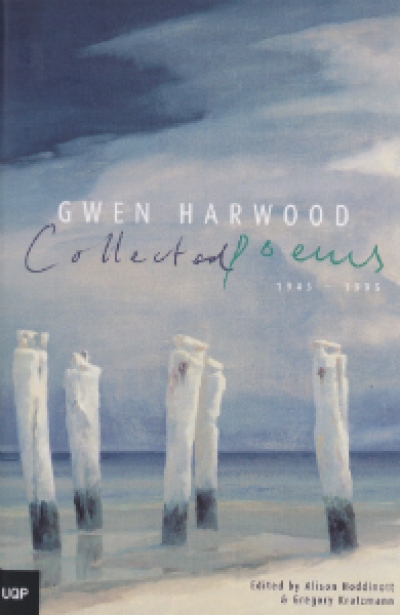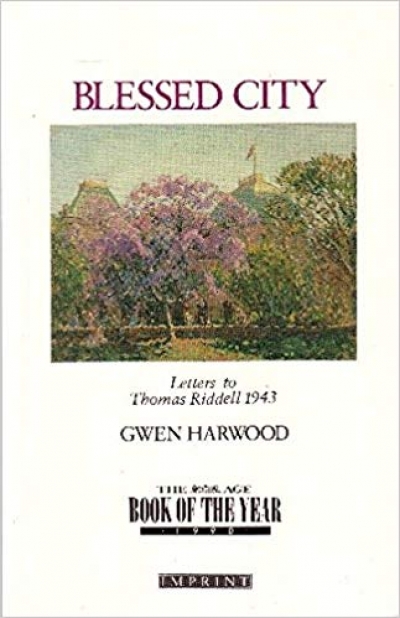Gwen Harwood
The Best 100 Poems of Gwen Harwood by Gwen Harwood, edited by John Harwood
In ‘Late Works’, the last poem in Black Inc.’s new selection of Gwen Harwood’s poetry, a dying poet, determined to pen her ‘late great’ poems, calls from her hospital bed for paper. The nurse, misunderstanding, brings toilet paper, much to the poet’s chagrin. It is a typical Harwood inversion ...
... (read more)Nine Lives: Postwar Women Writers Making Their Mark by Susan Sheridan
Susan Sheridan’s Nine Lives, a ‘group biography’, analyses the life stories and literary achievements of nine Australian women writers. The purpose, according to Sheridan, is not only to rediscover the life story of each, but also, by exploring their publishing and aesthetic context, to create a ‘fresh configuration’ of our literary history.
... (read more)The new English edition of a selection of Harwood’s poems comes with an excellent editorial pedigree. With his co-editorship of Gwen Harwood: Collected Poems 1943–1995 (2003) and his editorship of A Steady Storm of Correspondence: Selected Letters of Gwen Harwood 1943–1995 (2001), Gregory Kratzmann has established himself as the foremost of Harwood scholars. As a major critic of Australian poetry, Chris Wallace-Crabbe was an early champion of Harwood’s poetry, with a particular affinity, demonstrated in his own poetry, for the wit and wordplay that are distinguishing marks of Harwood’s work.
... (read more)W.H. Auden, following Samuel Butler, thought that ‘the true test of imagination is the ability to name a cat’, and plenty of people, poets, and others have believed this: to recast a dictum of Christ’s, if you can’t be trusted with the cats, why should we trust you with the tigers? Gwen Harwood could be trusted with the cats, and with yet more domestic things; here, for example, is her fairly late poem ‘Cups’
... (read more)A Steady Storm of Correspondence: Selected Letters of Gwen Harwood 1943–1995 edited by Gregory Kratzmann
Selected Poems: A new edition by Gwen Harwood, edited by Greg Kratzmann
Although her work is often surprisingly varied, there is no doubt that when you read a Gwen Harwood poem you enter a highly distinctive poetic world. If it comes from her first twenty-five years of productivity, there is a good chance that you will be in a landscape of psychic melodrama. Everything will be liminal. The setting will be a sunset, the late sun will be flaring a dangerous gold on some intertidal stretch, the protagonist will have awoken from a menacing dream or, pace Kröte, be moving backwards and forwards across the threshold of one. The history of her poetry may be the way this scene increases in intensity as the voices that communicate in dreams increasingly come from figures in Harwood’s own past.
... (read more)Boundary Conditions: The poetry of Gwen Harwood by Jennifer Strauss
In Boundary Conditions, Jennifer Strauss, taking her title from the Eisenhart poem of that name, points to the centrality of Gwen Harwood’s concern with ‘those littoral regions where the boundary terms that define themselves on either side of us also overlap and interact'. It is here, she claims, that ‘our most intense experiences, for better or worse, occur, and it is here that she correctly and perceptively locates Gwen Harwood’s major preoccupations as well as her recurrent images and settings.
... (read more)What is the relation between poet and critic? No, not a topic for yet another tedious and oppositional debate at a writers’ festival. Rather, a question about the nature of oppositions, and the possibility of disrupting, or even suspending them, in the varied and delicate acts of literary criticism. Let me frame my question even more precisely: who is the ‘Gwen Harwood’ to whom I refer when I write about the poetry of a women who in recent years has become increasingly public, celebrated and accessible?
... (read more)Gwen Harwood’s poetry has been the subject of an increasing number of essays and articles during the last decade; in the last twelve months three books have appeared (written by Alison Hoddinott, Elizabeth Lawson, and Jennifer Strauss) and a fourth (by Stephanie Trigg) is on the way. All of this industry, as well as the publication in the Oxford Poets series of a Collected Poems, is to be welcomed; few would deny that Gwen Harwood’s work deserves all the attention it gets, particularly as it continues to surprise and delight.
... (read more)Gwen Foster met Lieutenant Thomas Riddell in Brisbane in 1942, when she was twentytwo. ‘Tony’ Riddell, stationed in Brisbane, was sent to Darwin early in 1943; and between January and September of that year, Gwen Foster wrote him the eighty-nine letters that make up this book. It’s the chronicle of a year, of a city, of a family, of a friendship, of a war no one could see an end to, and of that stage in the life of a gifted young woman at which she says, ‘At present I am unsettled and do not know which way my life will turn.’
... (read more)







